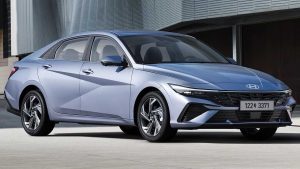The Evolution of Car Air Conditioning
Car air conditioning has come a long way since its inception, evolving from simple manual systems to sophisticated climate control mechanisms. In the early days, automotive air conditioning was a luxury reserved for high-end vehicles, but today, it’s a standard feature in most cars. Understanding the technology behind car air conditioning can help drivers appreciate its functionality and efficiency. Unveiling the Technology of Car Air Conditioning
How Does Car Air Conditioning Work?
Car air conditioning operates on the principles of refrigeration and thermodynamics. The system consists of several key components, including a compressor, condenser, evaporator, and expansion valve. Refrigerant, typically a blend of chemicals such as R-134a, circulates through these components, undergoing phase changes to absorb and release heat, thereby cooling the air inside the vehicle.
Key Components of Car Air Conditioning Systems
1. Compressor:
The compressor is the heart of the car’s air conditioning system. It pressurizes the refrigerant, transforming it from a low-pressure gas into a high-pressure liquid. This process raises the refrigerant’s temperature, making it ready for the next stage of the cooling cycle.
2. Condenser:
The condenser is located in front of the car’s radiator and functions as a heat exchanger. As the hot, pressurized refrigerant flows through the condenser coils, it dissipates heat to the surrounding air, causing the refrigerant to condense into a liquid state.

3. Evaporator:
The evaporator is typically housed inside the car’s dashboard or HVAC (Heating, Ventilation, and Air Conditioning) unit. As the high-pressure liquid refrigerant enters the evaporator, it undergoes a rapid expansion, lowering its temperature. Air from the car’s interior is then blown over the cold evaporator coils, where it absorbs heat from the refrigerant, resulting in cool air circulated into the cabin.
4. Expansion Valve:
The expansion valve regulates the flow of refrigerant into the evaporator, ensuring optimal cooling efficiency. By controlling the refrigerant’s pressure and flow rate, the expansion valve helps maintain consistent temperature levels inside the vehicle.
Modern Advancements in Car Air Conditioning
Recent advancements in automotive technology have led to the development of more efficient and eco-friendly air conditioning systems. Manufacturers are incorporating features such as variable-speed compressors, dual-zone climate control, and cabin air filters to enhance comfort and air quality for passengers.
1. Variable-Speed Compressors:
Variable-speed compressors adjust their operating speed based on the cooling demands of the vehicle, resulting in better energy efficiency and reduced wear and tear on the system. By dynamically adapting to changing conditions, these compressors optimize performance while minimizing power consumption.
2. Dual-Zone Climate Control:
Dual-zone climate control allows passengers in different areas of the car to set individual temperature preferences. This feature is particularly beneficial for accommodating varying comfort levels among passengers, ensuring everyone enjoys a pleasant driving experience.
3. Cabin Air Filters:
Cabin air filters help remove dust, pollen, and other airborne particles from the air entering the vehicle’s interior. By trapping contaminants, these filters improve air quality and reduce allergens, creating a healthier environment for passengers, especially those with respiratory sensitivities.
Conclusion
Car air conditioning technology has evolved significantly over the years, offering drivers and passengers greater comfort, convenience, and efficiency on the road. From the basic principles of refrigeration to advanced features like variable-speed compressors and cabin air filters, modern automotive HVAC systems continue to enhance the driving experience. As automotive manufacturers prioritize sustainability and innovation, we can expect further advancements in car air conditioning technology to meet the evolving needs of consumers and the environment.

